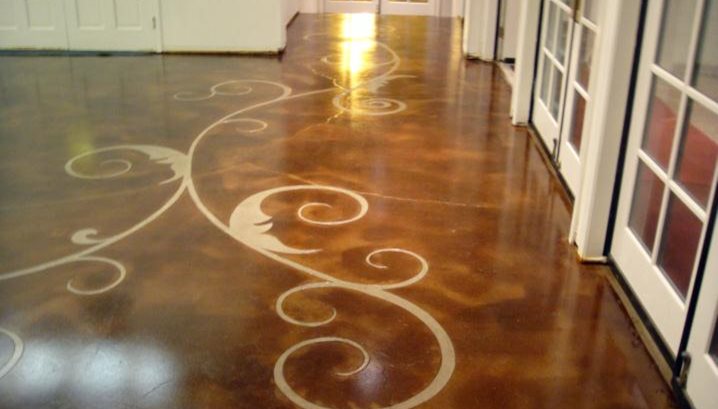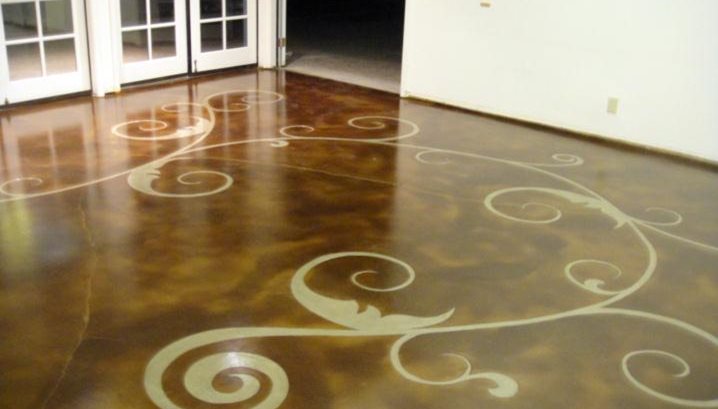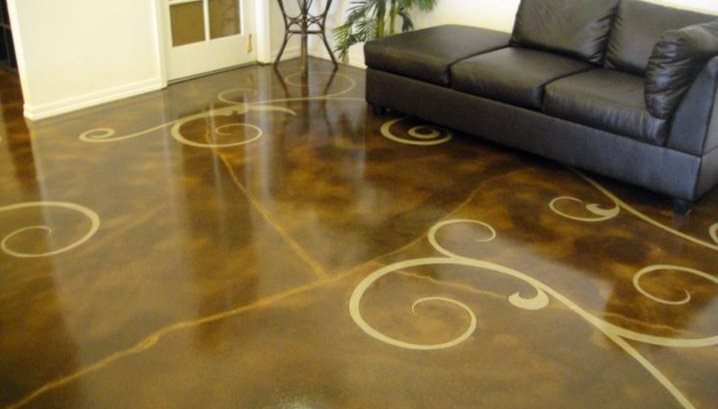The challenge
Used as a venue for educational seminars, meetings and other events, the 2,200-square-foot pavilion room at High Valley Ranch, Clearlake Oaks, Calif., sees a lot of activity. The commercial carpeting covering the concrete subfloor wasn't holding up to all the foot traffic and had to be replaced several times. The owners finally decided to remove it for good and stain the concrete subfloor to create an artistic surface that would not only be beautiful, but also practical, durable and cost effective.
"We were up for the challenge, knowing that people from all over the world were going to walk on our floor art," say Cary and Julie Grant, the owners of Floor Seasons, Las Vegas. They were contracted to do the staining, but had to work around the facility's busy seminar schedule. "A class was going on during the work, with the biggest class of the year coming in two days later," the Grants say. "We cut and rolled away the carpet to do some of the grinding, and then when the class came to use the room, we would roll the carpet back down."
How they did it
Cary decided to use a swirled floral motif for the floor because it's a classic, timeless design. But first, he had to prepare his canvas by getting all the carpeting and glue off the concrete subfloor. "Knowing that the concrete underneath the carpet was going to be the finished product, we started the painstaking job of grinding it down to a new, smooth palette. After we patched all of the holes, we were able to begin the art process," he says.
The free-form floral design was created using PVC pipe and pieces of metal cut into swirl and leaf shapes. "The PVC pipe bends to form an arc that was used to trace the design onto the floor, which was cut in later with an angle grinder and 4-inch diamond blade. The precut formed shapes made of metal were pieced together to form free-flowing organic art pieces. They were placed on the floor as templates and concrete stain was sprayed through them," says Julie.
A blend of black and brown acid stains was used as the backdrop for the floral design, making it easily visible. First, the design was carefully sealed to protect it, and then two coats of stain were sprayed right over the presealed art. "One technician was spraying while another was wiping off the art as he was going by. This is a difficult task, but if you don't get a good portion of the stain off of sealed art, it can leave nasty rings in the sealer. To add to the difficulty, the technician had to be careful not to wipe stain off the unsealed concrete," Cary explains.
To protect their artwork, Floor Seasons finished the job by applying two coats of sealer and six coats of floor wax. "It has been a year since we completed the project and it looks like the day we left it. Thousands of people have been enjoying the floor," the Grants say.
Materials used
Concrete stains: Lithochrome Chemstain in Padre Brown (from Scofield) and Stone Tone acid stain in black (from Kemiko)
Sealer: Desert Brand Lacquer Sealer, from Hill Brothers Chemical Co.
Floor wax: Sunglasses Floor Finish, Waxie Sanitary Supply
Staining contractor
Floor Seasons Inc., Las Vegas
Submit Your Own Project Photos
Read more about Stained Concrete
Return to Staining Concrete Projects


